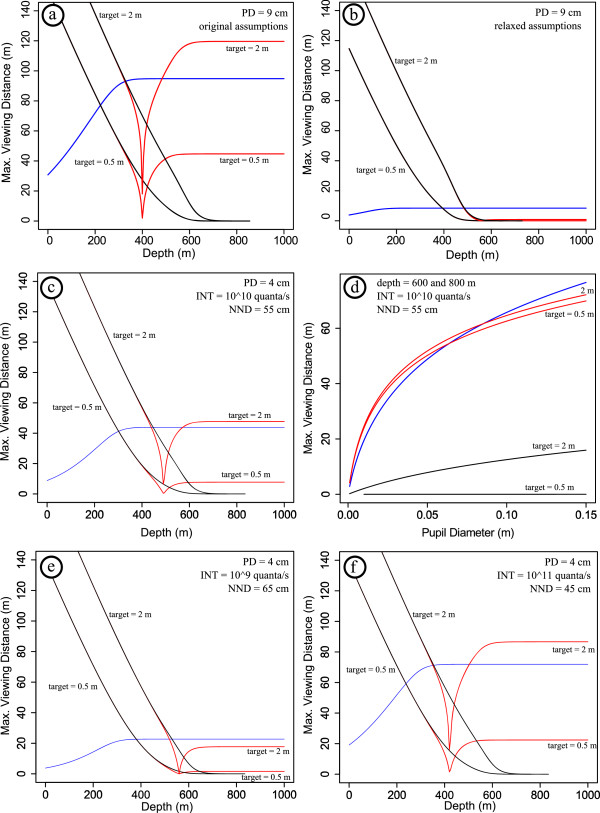Figure 1.
Visual performance in the deep sea. Results of the revised visual performance model are expressed as maximum viewing distance for three different types of targets: point sources against black background (blue line), extended luminous targets (red lines, 0.5 and 2 m target diameter), and dark extended sources (black lines, 0.5 and 2 m target diameter). (a) Visual performance model on the basis of original model assumptions from ref. 1 (b) Visual performance model on the basis of relaxed model assumptions. Please see text for further explanation. (c) Visual performance model on the basis of revised estimates of eye size (pupil diameter, PD = 4 cm), bioluminescent photon flux intensity (INT = 1010 quanta/s), and mesopelagic zooplankton density (nearest neighbor distance, NND = 55 cm). These parameter estimates are reasonable values for large parts of the deep mesopelagic realm. (d) Maximum viewing distance as a function of pupil size for the deep mesopelagic realm (600 and 800 m depth), demonstrating similar performance of point-light (against black background) and extended luminous target detection for a large range of eye sizes. (e) and (f) illustrate the effects of varying the parameter estimates within the ranges that may occasionally be encountered by giant squid in the deep mesopelagic settings. In areas with very high density of plankton with high bioluminescent photon flux large luminous sources can be detected about 10 m further away than point light sources when observed by an eye with 4 cm pupil diameter. In areas with very low density of plankton with low photon flux point light sources can be detected over a slightly larger distance. Again, most reasonable estimates of viewing distances in the deep mesopelagic realm are shown in (c).

